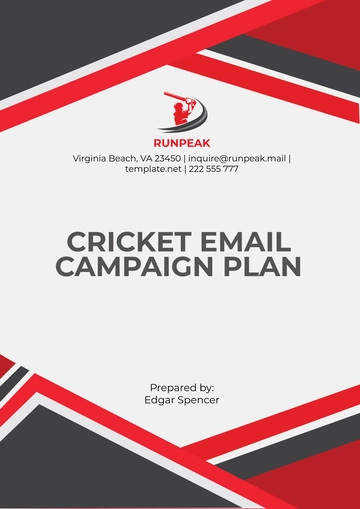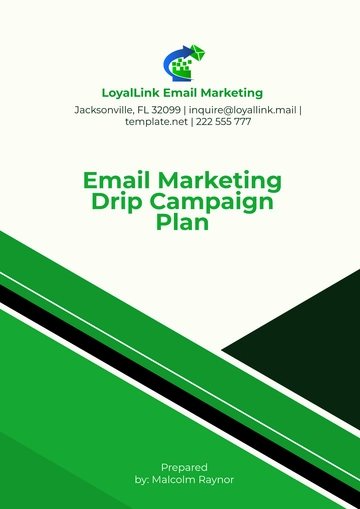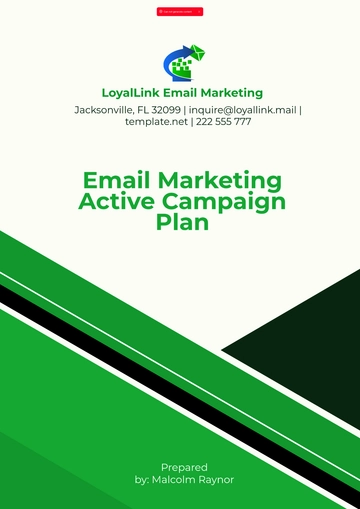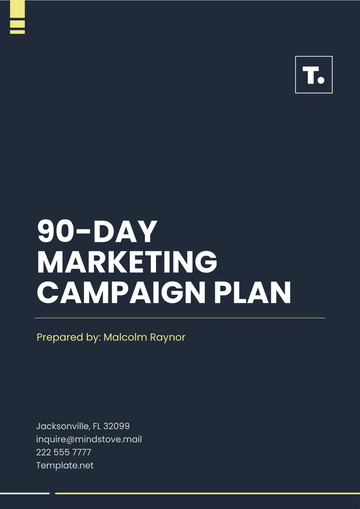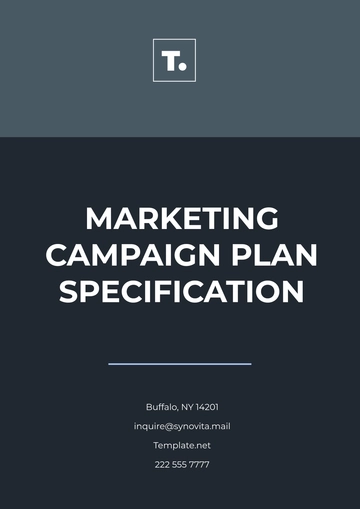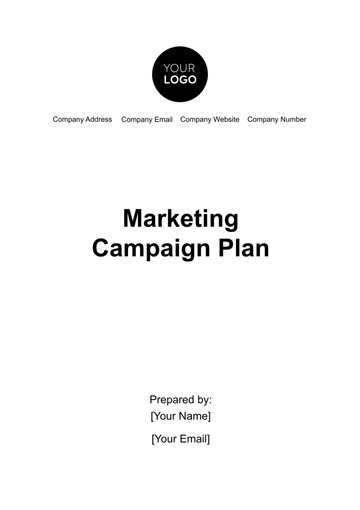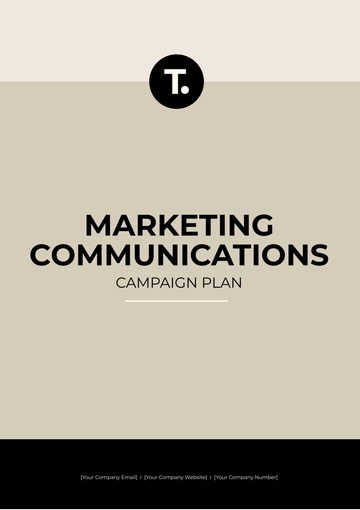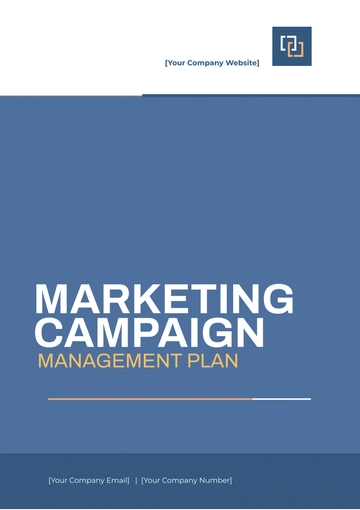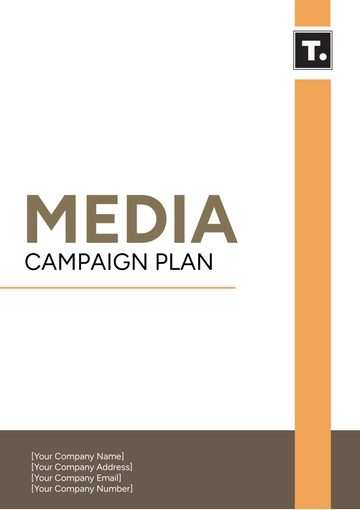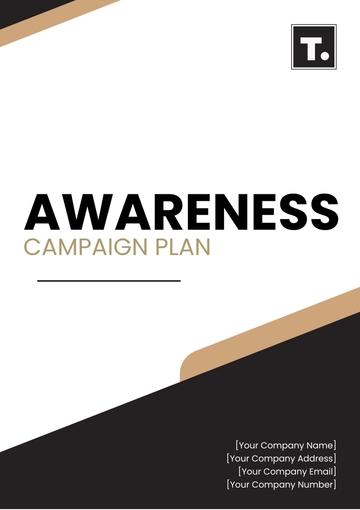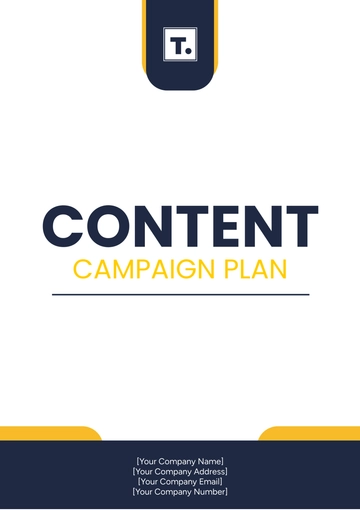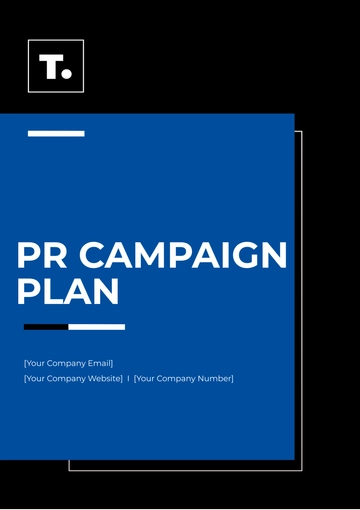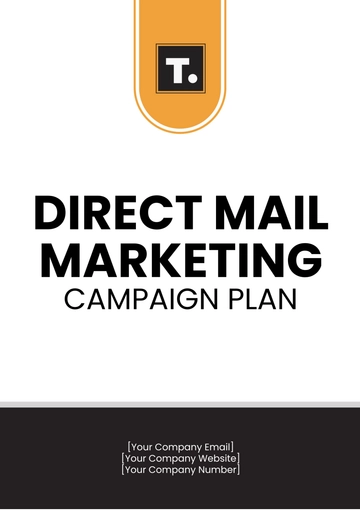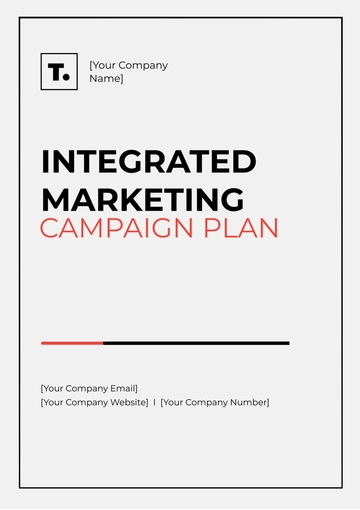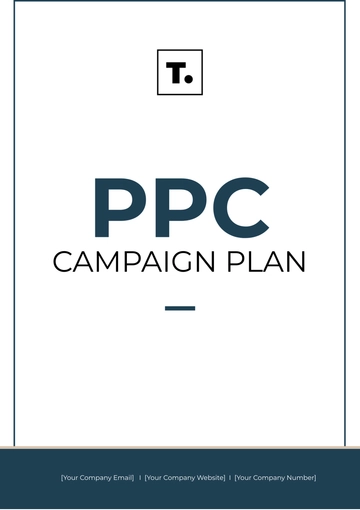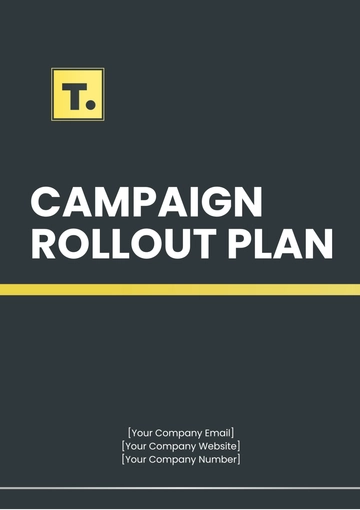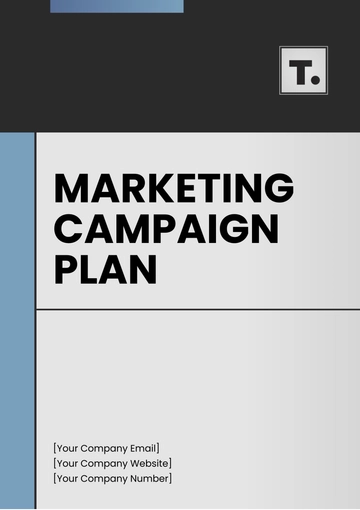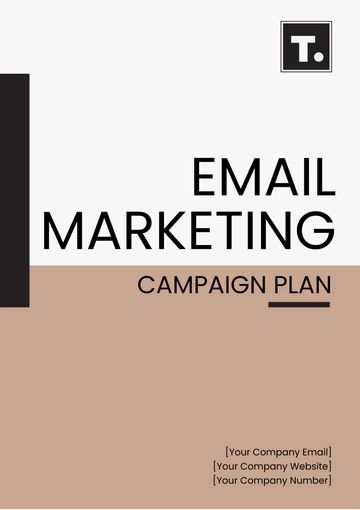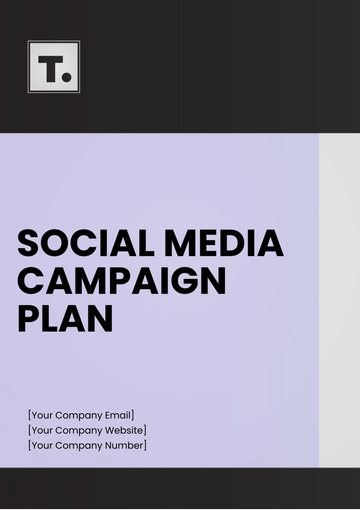Free Marketing Campaign Management Plan
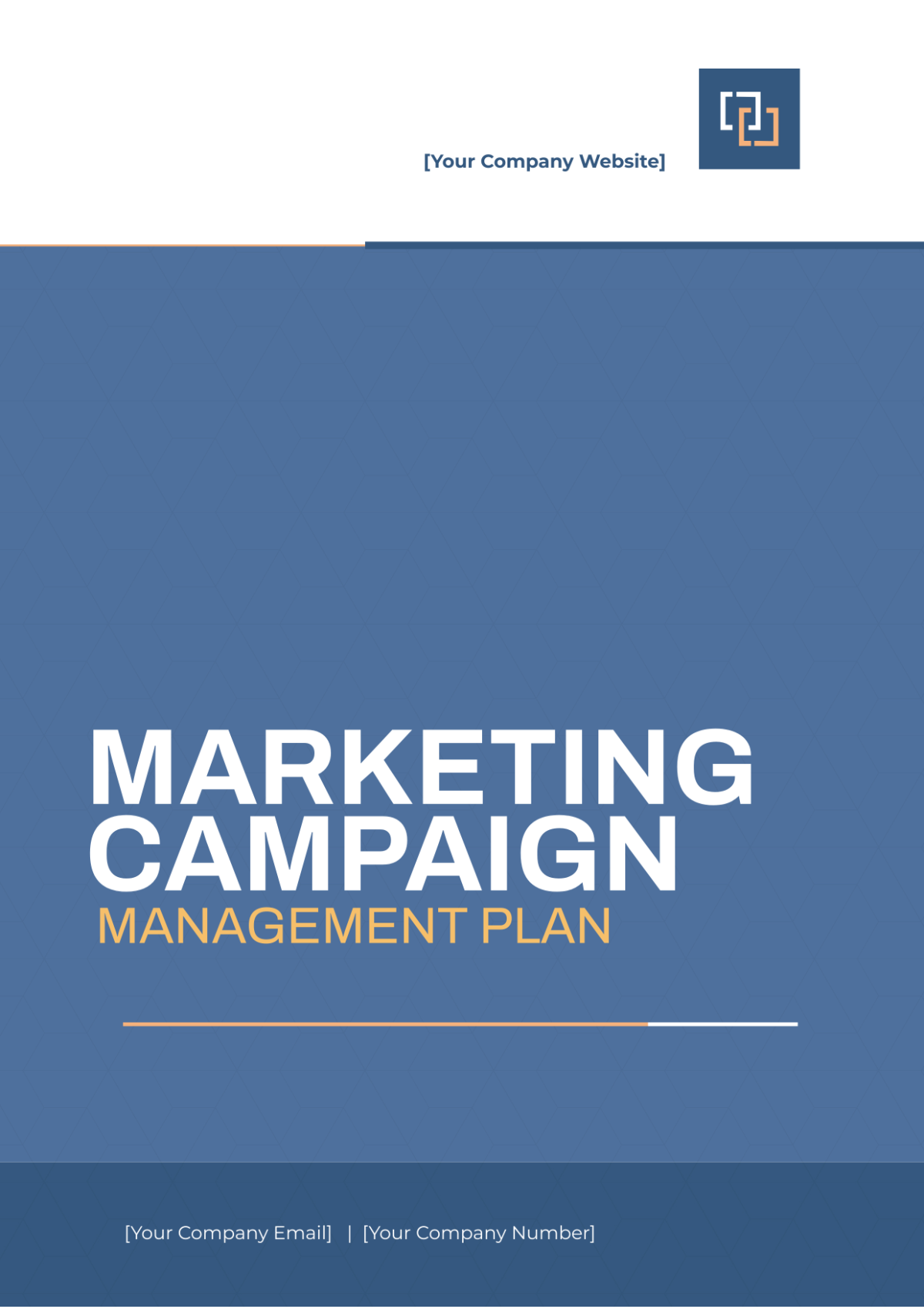
I. Executive Summary
The purpose of this Marketing Campaign Management Plan is to outline the strategies and tactics for the successful launch of our new product, [Product Name]. This plan will cover all aspects of the campaign, from initial market analysis to post-launch evaluation, ensuring a cohesive approach that maximizes market penetration and drives sales.
II. Situation Analysis
A. Market Overview
Industry Trends: Describe the current trends in the industry.
Market Size and Growth: Provide data on the market size and expected growth rates.
Competitive Analysis: Identify key competitors and analyze their strengths and weaknesses.
B. SWOT Analysis
Strengths: Internal attributes that are helpful to achieving the objective.
Weaknesses: Internal attributes that are harmful to achieving the objective.
Opportunities: External factors the project can exploit to its advantage.
Threats: External factors that could cause trouble for the business.
III. Objectives
Primary Objective: Achieve a market share of 15% within the first year.
Secondary Objectives:
Increase brand awareness by 25% within six months.
Attain 50,000 units sold within the first quarter.
Secure positive reviews from at least 10 major industry publications.
IV. Target Audience
A. Demographics
Age: 25-45 years old
Gender: All genders
Income Level: $50,000 - $100,000
Location: Urban and suburban areas
B. Psychographics
Interests: Technology enthusiasts, early adopters, professionals
Lifestyle: Busy, tech-savvy, value convenience and quality
C. Behavioral
Buying Habits: Prefers online shopping, responsive to digital marketing
Brand Loyalty: Moderate to high
V. Positioning and Messaging
A. Positioning Statement
[Product Name] is an all-in-one smart home solution that offers seamless integration and unparalleled convenience, making it the best choice for busy professionals who want to simplify their lives and enhance their homes.
B. Key Messages
Primary Message: Experience the future with [Product Name] – innovative, reliable, and tailored for your needs.
Supporting Messages:
Cutting-edge technology designed for modern living.
Exceptional quality and durability.
User-friendly features that enhance productivity and enjoyment.
VI. Marketing Strategy
A. Product
Detailed description of the product features and benefits.
Product packaging and design considerations.
B. Price
Pricing strategy (e.g., penetration pricing, premium pricing).
Comparison with competitor pricing.
C. Place
Distribution channels (e.g., online platforms, retail partnerships).
Geographic areas targeted for the launch.
D. Promotion
Digital Marketing: Social media campaigns, email marketing, influencer partnerships.
Traditional Marketing: Print ads, TV and radio spots, billboards.
Public Relations: Press releases, product launch events, media outreach.
Sales Promotion: Discounts, limited-time offers, bundling.
VII. Budget
Overview
A detailed budget allocation for each marketing activity, ensuring all expenses are accounted for and aligned with overall campaign objectives.
Activity | Budget ($) | Notes |
|---|---|---|
Digital Marketing | $50,000 | Social media ads, influencer fees |
Traditional Marketing | $30,000 | TV and radio spots, print ads |
Public Relations | $20,000 | Press events, media kits |
Sales Promotion | $15,000 | Discounts, offers |
Total | $115,000 |
VIII. Timeline
A. Pre-Launch (3 months before launch)
Market research and analysis
Develop marketing materials
Build and optimize the website
B. Launch Phase (Launch day to 1 month post-launch)
Execute digital and traditional marketing campaigns
Host launch event
Initiate PR activities
C. Post-Launch (2-6 months post-launch)
Monitor campaign performance
Adjust strategies based on feedback and performance data
Continued promotional efforts to sustain momentum
IX. Measurement and Evaluation
A. Key Performance Indicators (KPIs)
Sales Metrics: Number of units sold, revenue generated
Marketing Metrics: Website traffic, social media engagement, email open rates
Brand Metrics: Brand awareness, customer sentiment, media mentions
B. Evaluation Methods
Regularly review KPIs against objectives.
Conduct customer surveys and gather feedback.
Adjust marketing strategies based on performance analysis.
X. Conclusion
This Marketing Campaign Management Plan outlines a comprehensive approach to launching [Product Name], ensuring that all aspects from market analysis to post-launch evaluation are covered. By following this plan, we aim to achieve our objectives, drive significant sales, and establish [Product Name] as a leader in the market.
XI. Contact Details
Prepared by: [Your Name]
Position: [Your Position]
Contact Information: [Your Email] | [Your Company Number]
- 100% Customizable, free editor
- Access 1 Million+ Templates, photo’s & graphics
- Download or share as a template
- Click and replace photos, graphics, text, backgrounds
- Resize, crop, AI write & more
- Access advanced editor
A Marketing Campaign Management Plan is a detailed document outlining the strategy, objectives, tactics, timelines, and metrics for a specific marketing campaign. It serves as a roadmap to guide the execution of marketing activities aimed at achieving specific business goals, such as increasing brand awareness, generating leads, or boosting sales.
You may also like
- Finance Plan
- Construction Plan
- Sales Plan
- Development Plan
- Career Plan
- Budget Plan
- HR Plan
- Education Plan
- Transition Plan
- Work Plan
- Training Plan
- Communication Plan
- Operation Plan
- Health And Safety Plan
- Strategy Plan
- Professional Development Plan
- Advertising Plan
- Risk Management Plan
- Restaurant Plan
- School Plan
- Nursing Home Patient Care Plan
- Nursing Care Plan
- Plan Event
- Startup Plan
- Social Media Plan
- Staffing Plan
- Annual Plan
- Content Plan
- Payment Plan
- Implementation Plan
- Hotel Plan
- Workout Plan
- Accounting Plan
- Campaign Plan
- Essay Plan
- 30 60 90 Day Plan
- Research Plan
- Recruitment Plan
- 90 Day Plan
- Quarterly Plan
- Emergency Plan
- 5 Year Plan
- Gym Plan
- Personal Plan
- IT and Software Plan
- Treatment Plan
- Real Estate Plan
- Law Firm Plan
- Healthcare Plan
- Improvement Plan
- Media Plan
- 5 Year Business Plan
- Learning Plan
- Marketing Campaign Plan
- Travel Agency Plan
- Cleaning Services Plan
- Interior Design Plan
- Performance Plan
- PR Plan
- Birth Plan
- Life Plan
- SEO Plan
- Disaster Recovery Plan
- Continuity Plan
- Launch Plan
- Legal Plan
- Behavior Plan
- Performance Improvement Plan
- Salon Plan
- Security Plan
- Security Management Plan
- Employee Development Plan
- Quality Plan
- Service Improvement Plan
- Growth Plan
- Incident Response Plan
- Basketball Plan
- Emergency Action Plan
- Product Launch Plan
- Spa Plan
- Employee Training Plan
- Data Analysis Plan
- Employee Action Plan
- Territory Plan
- Audit Plan
- Classroom Plan
- Activity Plan
- Parenting Plan
- Care Plan
- Project Execution Plan
- Exercise Plan
- Internship Plan
- Software Development Plan
- Continuous Improvement Plan
- Leave Plan
- 90 Day Sales Plan
- Advertising Agency Plan
- Employee Transition Plan
- Smart Action Plan
- Workplace Safety Plan
- Behavior Change Plan
- Contingency Plan
- Continuity of Operations Plan
- Health Plan
- Quality Control Plan
- Self Plan
- Sports Development Plan
- Change Management Plan
- Ecommerce Plan
- Personal Financial Plan
- Process Improvement Plan
- 30-60-90 Day Sales Plan
- Crisis Management Plan
- Engagement Plan
- Execution Plan
- Pandemic Plan
- Quality Assurance Plan
- Service Continuity Plan
- Agile Project Plan
- Fundraising Plan
- Job Transition Plan
- Asset Maintenance Plan
- Maintenance Plan
- Software Test Plan
- Staff Training and Development Plan
- 3 Year Plan
- Brand Activation Plan
- Release Plan
- Resource Plan
- Risk Mitigation Plan
- Teacher Plan
- 30 60 90 Day Plan for New Manager
- Food Safety Plan
- Food Truck Plan
- Hiring Plan
- Quality Management Plan
- Wellness Plan
- Behavior Intervention Plan
- Bonus Plan
- Investment Plan
- Maternity Leave Plan
- Pandemic Response Plan
- Succession Planning
- Coaching Plan
- Configuration Management Plan
- Remote Work Plan
- Self Care Plan
- Teaching Plan
- 100-Day Plan
- HACCP Plan
- Student Plan
- Sustainability Plan
- 30 60 90 Day Plan for Interview
- Access Plan
- Site Specific Safety Plan
